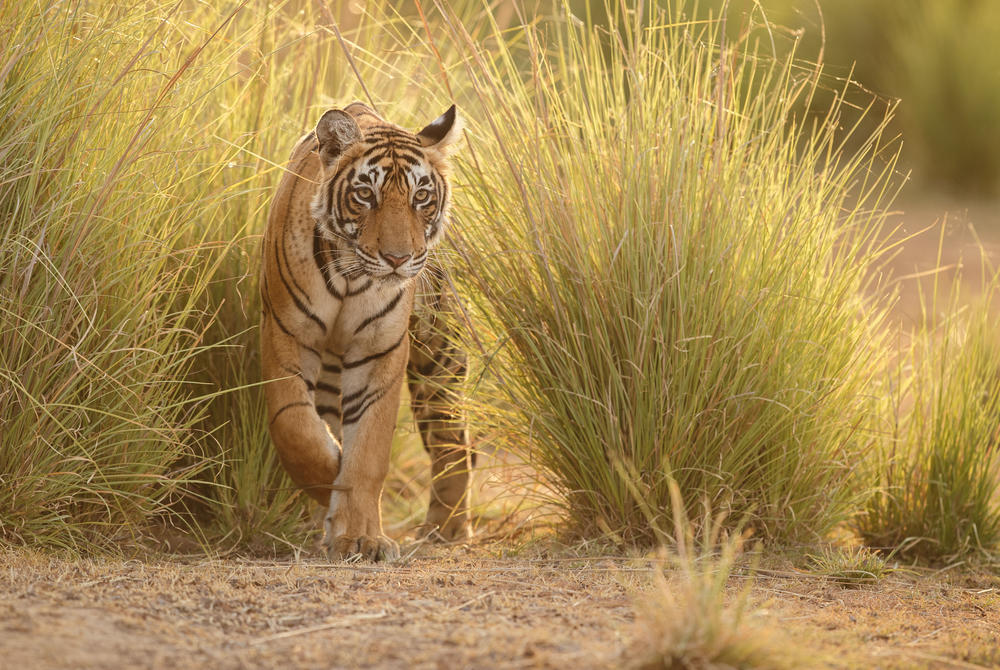Article content
29 May 2024 by Krishna Ghosh
There can be few more exciting experiences than spotting a tiger in the wild. From the crumbling ruins of Ranthambore National Park to the jungles of Madyha Pradesh, here we round up the best places in India to enjoy one of the world's most spectacular wildlife encounters.
Bandhavgarh
Bandhavgarh National Park, within easy reach of Varanasi, is renowned as one of the country's most beautiful reserves and famed for its tiger sightings. Although small in size, Bandhavgarh has the highest density of tigers anywhere in the country, along with leopard, various deer species, jungle cat, hyena, jackal, fox and wild dog. Experience the best of Bandhavgarh with our Tigers of Madyha Pradesh itinerary.

Kanha National Park is one of India's largest parks and was one of the first to be protected under Project Tiger. Along with the healthy tiger population, it is also the last remaining habitat of the hard ground barasingha, or swamp deer. Indian bison, antelope, leopard and around 300 species of birds also make their homes amid Kanha's vast and beautiful forests.

Panna
Panna National Park is a pristine wilderness area – a vast plateau dominated by thick teak forests, grasslands, deep gorges, cascading waterfalls and the central tree-lined Ken River, with its views of ruined temples and ancient hunting lodges. See crocodiles, tigers, leopards and more within Madhya Pradesh's Vindhyan mountain range, just 30 kilometres from the Khajuraho Temples.

Pench
Made famous by Kipling's famous ‘Jungle Book', Pench National Park sprawls over a breathtaking landscape of hills, forests and valleys, with the meandering Pench River dividing the park in two. Head out on early morning and evening safaris to spot tigers and leopards alongside large numbers of deer, wild dog, jungle cat, jackal, crocodiles, turtles and water birds.

Ranthambore
A former hunting ground of the Maharaja of Jaipur, this 400 sq km park is India’s most popular, with crumbling ruins, a 10th-century fort and Rajasthan’s largest tiger population. Through widespread and successful conservation projects, the park is home to a burgeoning tigers population – now more than 70.



